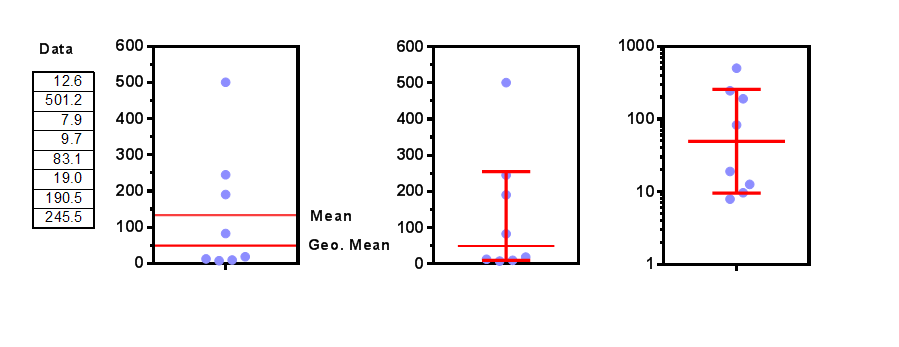

Usually a title is centered over the graph or axis. Select the title, Then press the or buttons on the toolbar to change the point size. Or double-click on the axis to open the Format Axes dialog, go to the Titles&Fonts tab, and click the Font button. Select the title, or a portion of it, and use Font tools on the toolbar. Check "Show title" in the Titles and Fonts tab of Format Axes dialog. Then press the DEL key.ĭouble-click an axis to open the Format Axes dialog. If you are editing a Y-axis vertical title, it will be temporarily displayed horizontally for editing.

While editing the title, you can use controls in the text toolbar.ĭrag over the title to select it. When you are done, click in the background of the graph. To enter more than one line, press Enter between lines. If you are editing a Y-axis title, it will be temporarily displayed horizontally for editing. Turner RJ, Charlton SJ (2005) Assessing the minimum number of data points required for accurate IC 50 determination.By default, Prism puts generic titles on top of the graph and on the X- and Y-axes.Ĭlick in the title to select it. Yamamoto K, Konami Y, Irimura T (1997) Sialic acid-binding motif of Maackia amurensis lectins. Wang L, Cummings RD, Smith DF, Huflejt M, Campbell CT, Gildersleeve JC, Gerlach JQ, Kilcoyne M, Joshi L, Serna S, Reichardt N-C, Pera NP, Pieters RJ, Eng W, Mahal LK (2014) Cross-platform comparison of glycan microarray formats. Geisler C, Jarvis DL (2011) Letter to the glyco-forum: effective glycoanalysis with Maackia amurensis lectins requires a clear understanding of their binding specificities. J Biol Chem 275:17541–17548Ĭeroni A, Maass K, Geyer H, Geyer R, Dell A, Haslam SM (2008) GlycoWorkbench: a tool for the computer-assisted annotation of mass spectra of glycans. Imberty A, Gautier C, Lescar J, Pérez S, Wyns L, Loris R (2000) An unusual carbohydrate binding site revealed by the structures of two Maackia amurensis lectins complexed with sialic acid-containing oligosaccharides. Wang S-K, Liang P-H, Astronomo RD, Hsu T-L, Hsieh S-L, Burton DR, Wong C-H (2008) Targeting the carbohydrates on HIV-1: interaction of oligomannose dendrons with human monoclonal antibody 2G12 and DC-SIGN. Liang P-H, Wang S-K, Wong C-H (2007) Quantitative analysis of carbohydrate−protein interactions using glycan microarrays: determination of surface and solution dissociation constants. Gerlach JQ, Kilcoyne M, Eaton S, Bhavanandan V, Joshi L (2011) Non-carbohydrate-mediated interaction of lectins with plant proteins. ACS Omega 4:3083–3097įeeney S, Gerlach JQ, Slattery H, Kilcoyne M, Hickey RM, Joshi L (2019) Lectin microarray profiling and monosaccharide analysis of bovine milk immunoglobulin G oligosaccharides during the first 10 days of lactation. Kilcoyne M, Patil V, O’Grady C, Bradley C, McMahon S (2019) Differential glycosylation expression in injured rat spinal cord treated with immunosuppressive drug Cyclosporin-A.

Key wordsįlannery A, Le Berre M, Pier GB, O’Gara JP, Kilcoyne M (2020) Glycomics microarrays reveal differential in situ presentation of the biofilm polysaccharide poly- N-acetylglucosamine on Acinetobacter baumannii and Staphylococcus aureus cell surfaces.
#HOW TO CENTER A TITLE ON GRAPHPAD PRISM 6 FREE#
In the example used to illustrate the method in this chapter, IC 50 calculation is demonstrated for inhibition of Maackia amurensis agglutinin (MAA) binding to 3′sialyl- N-acetyllactosamine (3SLN) using free lactose. In this chapter, we describe methods to fluorescently label a lectin, to carry out a lectin binding inhibition experiment on glycan microarrays, and to calculate the IC 50 value of a binding inhibitory molecule using GraphPad Prism software. IC 50 values can be calculated using experimental data from various platforms including enzyme-linked immunosorbent assay- (ELISA-)type microtiter plate assays, isothermal titration calorimetry (ITC), or glycan microarrays. Half maximal inhibitory concentration (IC 50) is a measurement often used to compare the efficiency of various carbohydrates and their derivatives for inhibition of lectin binding to particular ligands.


 0 kommentar(er)
0 kommentar(er)
